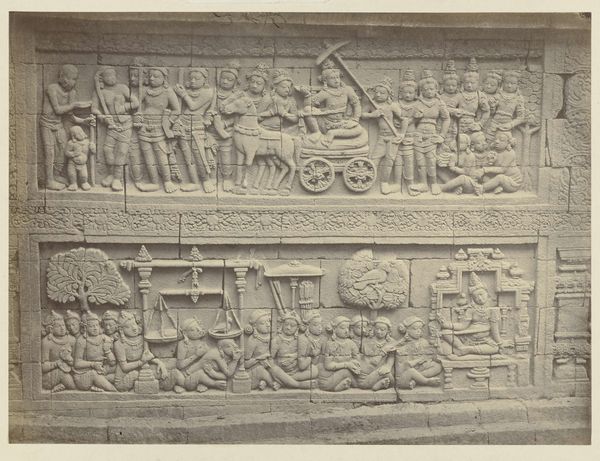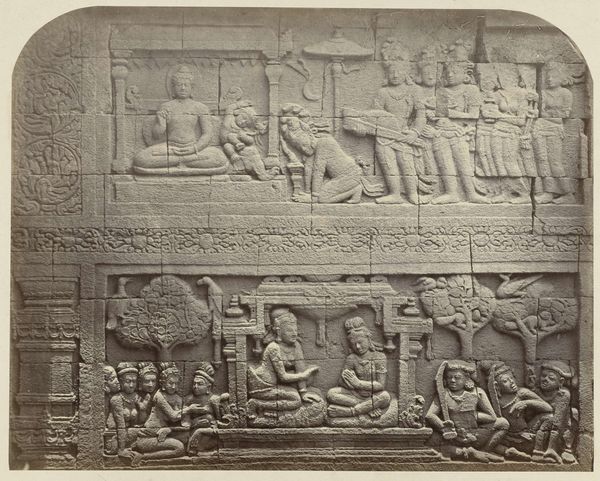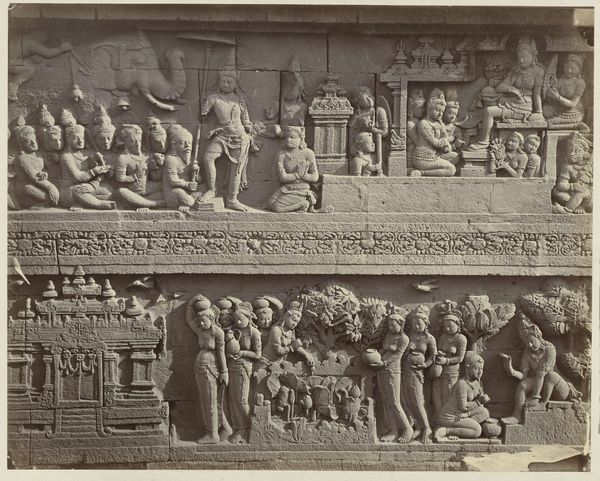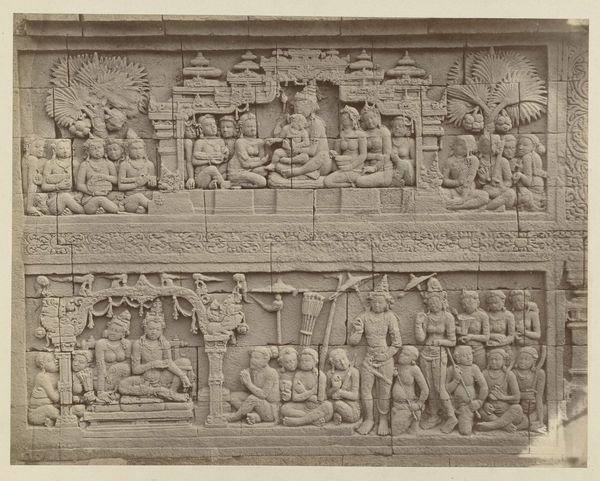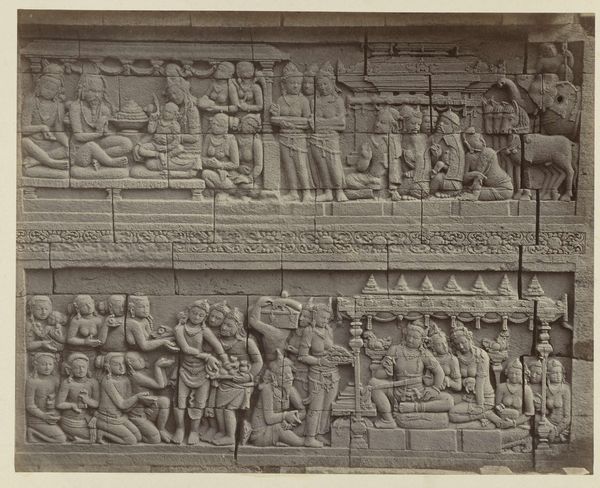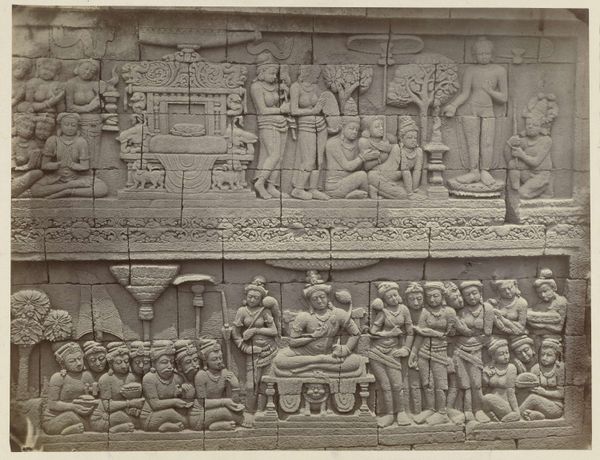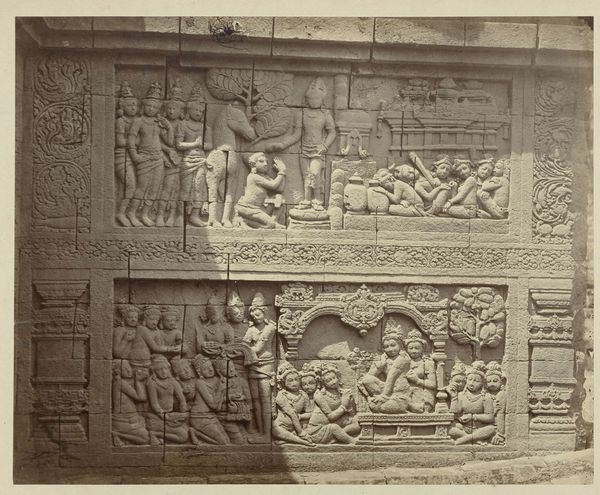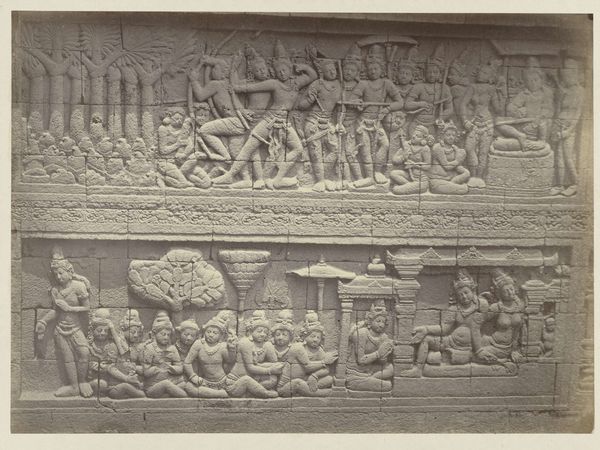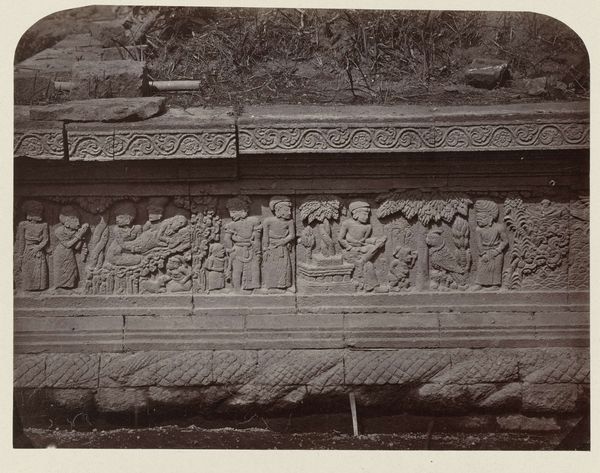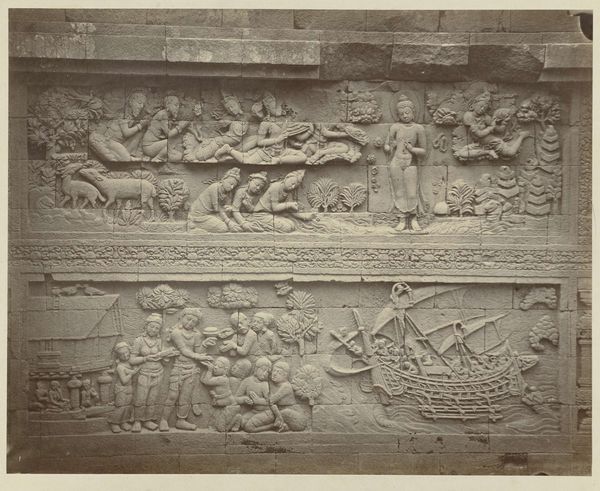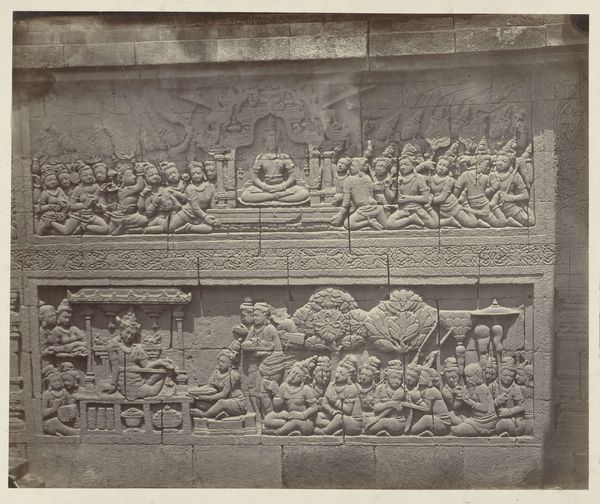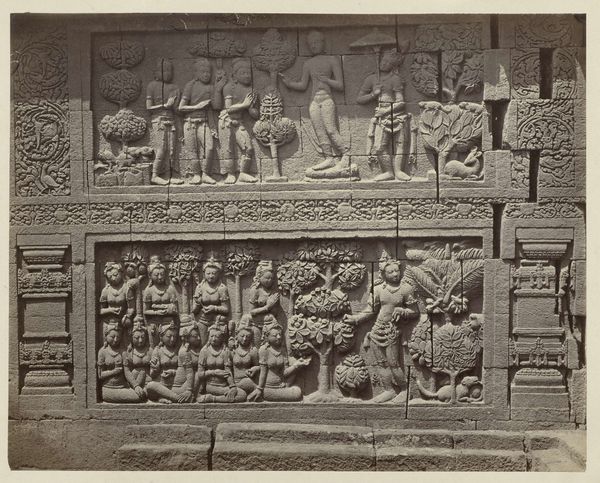
Baseliëf in de muur aan de noordzijde van de Borobudur Possibly 1873 - 1879
0:00
0:00
relief, bronze, photography
#
narrative-art
#
asian-art
#
relief
#
landscape
#
bronze
#
photography
#
ancient-mediterranean
Dimensions: height 300 mm, width 400 mm
Copyright: Rijks Museum: Open Domain
Editor: This photograph captures a bas-relief on the Borobudur temple, possibly taken between 1873 and 1879 by Isidore Kinsbergen. It looks like carved stone, very intricate. What can you tell me about it? Curator: Well, as a materialist, what strikes me is the intersection of labor, material, and context that this photograph embodies. Think about the workers who physically extracted and carved the stone. What kind of labor practices do you think were in place when the bas-relief was produced? Editor: That’s a great point; it must have taken a lot of manpower. Is there any way we can interpret what's shown on it? Curator: I believe we need to examine the social implications inherent in the production of art objects within particular historical circumstances, specifically the history of production. And consider that Kinsbergen chose to photograph it. The act of photographing itself became a means of disseminating and framing these materials. Editor: So the choice to document these reliefs changes how they were meant to be viewed. Does the photograph somehow 'cheapen' them? Curator: Not necessarily, but it redirects them. The photography made this formerly fairly local practice and artwork into something widely available. And of course, a black and white photograph also filters a lot of information: the color of the stone, the position relative to sunlight and time, the true scale... Can we see bronze work without considering the bronze trade, which, of course, involved politics, colonial control, economic growth? These choices have significant cultural ramifications. Editor: This perspective changes my view a lot. Now I will be much more aware of these often-unseen implications. Curator: Exactly! Examining art this way connects aesthetic expression with larger economic and social structures.
Comments
No comments
Be the first to comment and join the conversation on the ultimate creative platform.
